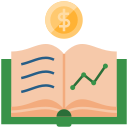Start Smart: A Friendly Introduction to Index Funds for New Investors
Chosen theme: Introduction to Index Funds for New Investors. Welcome to a calm, clear path into the markets—where low costs, broad diversification, and patient habits help first-time investors grow with confidence.

Tracking the Market, Without the Guesswork
Instead of trying to pick winning stocks, index funds follow a list of companies in a benchmark like a broad market index. This approach keeps things simple, spreads your risk widely, and helps you focus on time in the market, not timing.
Passive Investing, Explained in Real Terms
Passive funds are built to follow rules, not hunches. Because they do not constantly trade based on predictions, they typically keep costs low and taxes efficient, making them especially friendly for beginners building confidence.
A New Investor’s First Step
Picture setting aside your first small amount into a total market index fund. You instantly own a slice of thousands of companies, gaining broad exposure and a foundation to learn at a comfortable, sustainable pace.
Why Costs Matter: Expense Ratios and More
An expense ratio is the annual fee taken by the fund to operate. Even a small difference compounds over time, so choosing low-cost index funds is one of the most reliable ways to tilt long-term results in your favor.
Tracking error measures how closely a fund matches its benchmark’s performance. Lower tracking error generally means the fund is doing its job well—keeping you aligned with the market you intended to follow.
Bid-ask spreads and trading frequency can quietly eat into returns. Many beginners avoid frequent trading, use limit orders when necessary, and choose highly liquid index funds to help reduce these hidden frictions.

ETFs vs. Index Mutual Funds: Choosing What Fits You
ETFs trade throughout the day at market prices, letting you buy or sell in real time. Many beginners appreciate flexibility but avoid over-trading by setting a simple schedule and focusing on long-term accumulation.
Building a Simple Beginner Portfolio
Many beginners use a total domestic stock index, a total international stock index, and a total bond market index. This trio offers global diversification and a balanced experience, while remaining refreshingly simple to maintain.
Investing a set amount on a schedule smooths out market swings. Dollar-cost averaging reduces the pressure to guess highs and lows, helping you stay invested and emotionally steady through noisy headlines.
Once or twice a year, compare your current allocation to your target mix. Small, planned adjustments keep risk in check and help you avoid reacting impulsively when markets feel exciting or scary.

Index funds will fluctuate because the market fluctuates. When you understand that dips are part of the journey, it becomes easier to stay invested and benefit from recoveries over the years ahead.
Understanding Risk and Your Time Horizon
Tax Basics for Index Fund Investors
Because passive funds trade less, they often realize fewer taxable gains. This can reduce surprise distributions, helping taxable accounts compound more smoothly over long investing horizons.

Check the expense ratio, index tracked, replication method, and policies. You do not need to memorize everything—just confirm the fund aligns with your goals and keeps costs disciplined.
Do Your Homework: Read What Matters, Ignore the Noise
Learn how companies are included, weighted, and replaced. Whether it is market-cap weighting or another approach, knowing the rules helps you anticipate behavior in different market cycles.
